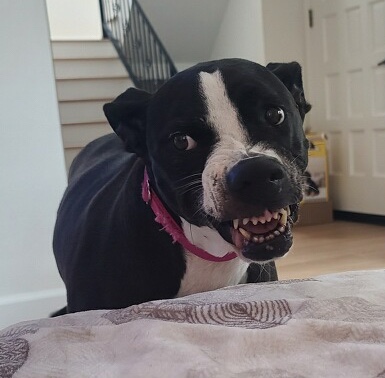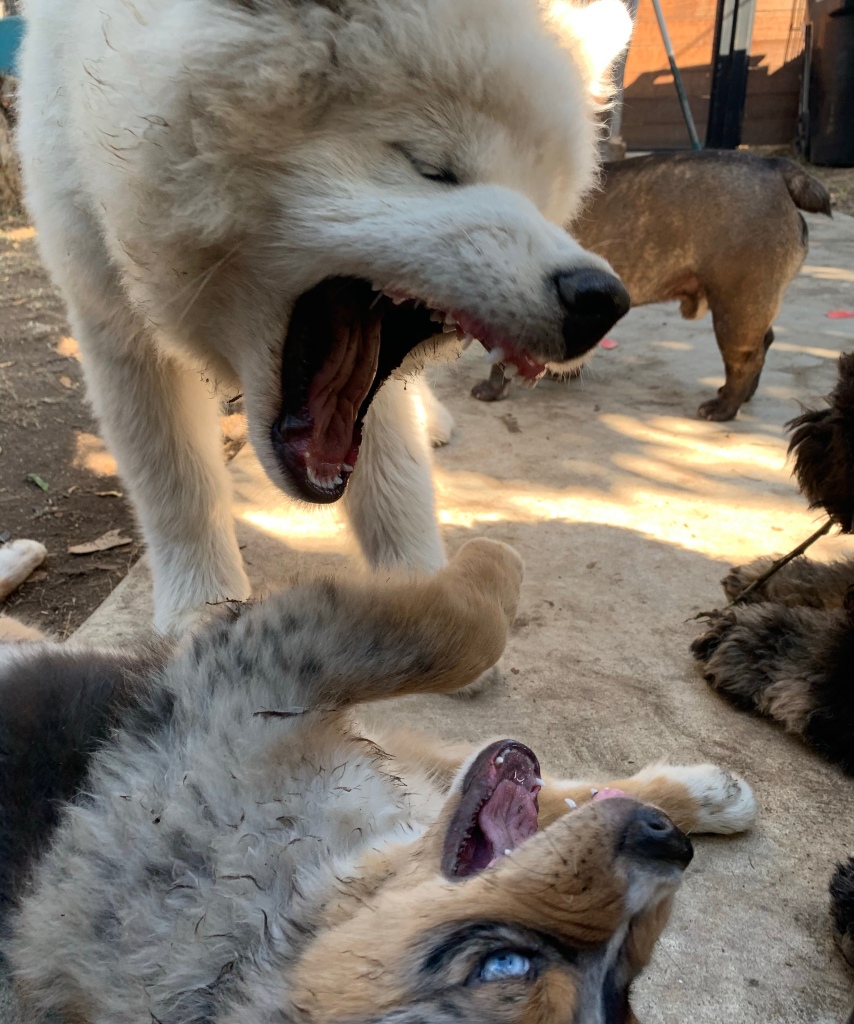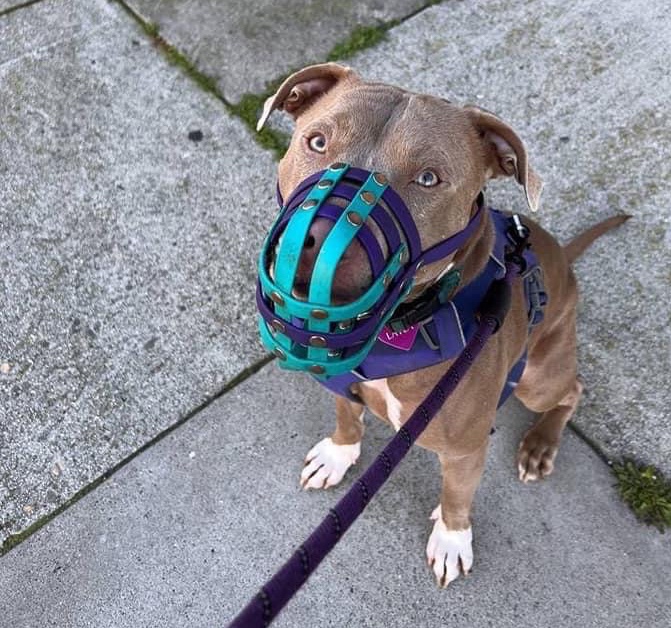I met Johnnie at age 8, shortly after he’d been re-homed. His new family called me because he’d been “a little nippy” with their granddaughter and 2 members of their house staff in the span of 4 weeks.
His new family wasn’t terribly concerned about his behavior, and were quick to assume they were at fault. They told me they hadn’t had a dog in many years, and Johnnie’s previous home said he never had any behavior problems in the 6 years they’d had him, so the new home felt they must be doing something “wrong.”

As with most of my behavior consultations, all wasn’t as it appeared to be in the initial phone call.
When I met Johnnie, I found a dog that was quick to use his mouth to control his world, and one that had almost zero tolerance for frustration. If he didn’t get his way by growling and snapping, this adorable, 20 pound terrier mix became a lunging, snarling, out-of-control bundle of aggression.
I was immediately concerned about Johnnie being in a home where young children visited frequently, but his newly adoptive family believed they could “handle” his outbursts while we worked together. That was until he bit a family member whose only “fault” was being too close to the dog during a gardener-induced meltdown, a little over a week after we began working together.
Shortly after this incident, I contacted Johnnie’s previous guardians, in an attempt to better assess his behavior history. They expressed shock at learning he’d bitten someone, and reiterated that Johnnie had been a loving, happy dog, who had never shown any aggression in 6 years.

After 15 years of behavior modification work I’ve come to know one thing for sure: many people are in a state of denial about their dog’s behavior.
People routinely excuse, ignore, and conveniently forget about repeated displays of aggression, even when faced with evidence to the contrary. For some people, this appears preferable to admitting they aren’t in control of their canine companion, and need professional guidance. As a result, taking what people report at face value would make my job all but impossible, so I put on my reporter’s hat in these situations, and question everything I’m told.
This is how it came to light that Johnnie had been aggressive in the presence of the gardeners every week for the past 6 years. His previous family isolated Johnnie when the gardener and anyone new arrived at the home. In their mind this solved their problem.
Johnnie also “didn’t like it” whenever he was told to leave the closet he frequently hid in, or told to get off of furniture, or just about anything else Johnnie didn’t want to do. When asked what they did to address these situations, I was informed they told him “no.” Nothing changed, the aggression didn’t stop, but the family felt there was nothing more they needed to do because they loved Johnnie, and he was an affectionate dog when he wanted to be. In their minds, it seemed, using any form of discipline would be cruel because he wasn’t aggressive 100% of the time.
Had they been able to live with Johnnie until the end of his natural life, the choice to excuse his aggressive behaviors would have been a private matter.
Unfortunately for Johnnie, and many dogs just like him, that didn’t happen. When his family of 6 years moved to an apartment that didn’t allow dogs, Johnnie was homeless, confused, and no longer living with people who were willing or able to endure his dangerous behavior. Of course no one was able to explain this to Johnnie in a language he understood, so he went on behaving the way he always had, and ultimately injured 4 people in the course of a few weeks, and thus lost his new home, too.
When no home or rescue organization could be located to take on the prospect of rehabilitating Johnnie, the decision was made to euthanize him. As heartbreaking as this outcome is to contemplate, the real tragedy occurred when 2 year old Johnnie began displaying the aggressive behaviors, and no one chose to teach him how to behave differently. The earlier undesirable behaviors are addressed, the easier they are to change, in dogs and in people.
On the other hand, excusing dangerous behavior in dogs in the name of “love” always costs dogs the most, in the long run. Refusing to recognize or address behavior issues when the dog is young isn’t a sign of affection, it’s a recipe for future disaster.
Even if you’re able to provide a lifelong home for an aggressive dog, can you imagine what it must feel like to live life so full of rage or fear that you’re compelled to violently lash out at any person or situation that’s out of your control?
That’s the life Johnnie led, and while I’m sure his people had the best intentions, their decisions ultimately cost the dog they professed to love his life.
All dogs need training, and unbalanced dogs need consistent, compassionate people who will show them how to be calm, happy family members.

Take the time to teach your dog what you want them to do, rather than just react when you don’t like their behavior. Dogs deserve this, at the very least, for all they give us.
Dee Green has been a professional dog trainer and canine behavior consultant for more than 20 years. She specializes in puppies up to 18 months, and fearful, anxious and reactive dogs of all ages.
©️Dee Green, 2023
